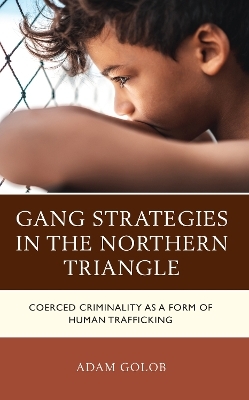
Gang Strategies in the Northern Triangle
Coerced Criminality as a Form of Human Trafficking
Seiten
2022
Lexington Books/Fortress Academic (Verlag)
978-1-6669-0979-1 (ISBN)
Lexington Books/Fortress Academic (Verlag)
978-1-6669-0979-1 (ISBN)
This book develops a novel approach to analyzing the intersectionality of gang criminality and human trafficking in the Northern Triangle of Central America. Its argument is new, compelling, and aligned with the future direction of this field of study.
Gang Strategies in the Northern Triangle: Coerced Criminality as a Form of Human Trafficking argues for a more robust understanding of the issues, dynamics, and contextual factors of human trafficking. Relying on the definition as established by the Palermo Protocol more than two decades ago, this book takes a hard look at the strategies and results of gang “recruitment” in the Northern Triangle countries as a particular and understudied form of human trafficking—gang trafficking. It offers a lens through which to evaluate the actions of gangs, specifically MS13 and Barrio 18, as they use methods of coercion to force the compliance of youths as de facto gang slaves. By elaborating on this dynamic, and on the risks associated with anti-gang policies and harsh law enforcement practices, Gang Strategies in the Northern Triangle unravels the underlying victimization, exploitation, and criminalization of youths in Honduras, Guatemala, and El Salvador. The book maintains that the crimes of gang violence and the crimes of human trafficking intertwine and intersect to perpetuate an environment of trauma, exploitation, and hopelessness that leaves thousands with no options, as refugees, conscripted into gangs, incarcerated for crimes they were forced to commit, or dead.
Gang Strategies in the Northern Triangle: Coerced Criminality as a Form of Human Trafficking argues for a more robust understanding of the issues, dynamics, and contextual factors of human trafficking. Relying on the definition as established by the Palermo Protocol more than two decades ago, this book takes a hard look at the strategies and results of gang “recruitment” in the Northern Triangle countries as a particular and understudied form of human trafficking—gang trafficking. It offers a lens through which to evaluate the actions of gangs, specifically MS13 and Barrio 18, as they use methods of coercion to force the compliance of youths as de facto gang slaves. By elaborating on this dynamic, and on the risks associated with anti-gang policies and harsh law enforcement practices, Gang Strategies in the Northern Triangle unravels the underlying victimization, exploitation, and criminalization of youths in Honduras, Guatemala, and El Salvador. The book maintains that the crimes of gang violence and the crimes of human trafficking intertwine and intersect to perpetuate an environment of trauma, exploitation, and hopelessness that leaves thousands with no options, as refugees, conscripted into gangs, incarcerated for crimes they were forced to commit, or dead.
Adam Golob is instructor in political science, interdisciplinary studies, and ethnic/regional studies at Whatcom Community College and Hillsborough Community College.
Chapter 1—The Traditional Human Trafficking Model
Chapter 2—Gang Power
Chapter 3—A Non-Traditional Model of Human Trafficking vis-à-vis Gang Recruitment
Chapter 4—Non-Traditional Victimization
Chapter 5—Northern Triangle Case Studies
Chapter 6—Beyond the State
| Erscheinungsdatum | 18.08.2022 |
|---|---|
| Sprache | englisch |
| Maße | 160 x 240 mm |
| Gewicht | 463 g |
| Themenwelt | Recht / Steuern ► Strafrecht ► Kriminologie |
| ISBN-10 | 1-6669-0979-3 / 1666909793 |
| ISBN-13 | 978-1-6669-0979-1 / 9781666909791 |
| Zustand | Neuware |
| Haben Sie eine Frage zum Produkt? |
Mehr entdecken
aus dem Bereich
aus dem Bereich
wie wir unsere Mimik und verborgene Körpersignale entschlüsseln
Buch | Hardcover (2022)
Droemer (Verlag)
CHF 27,95


